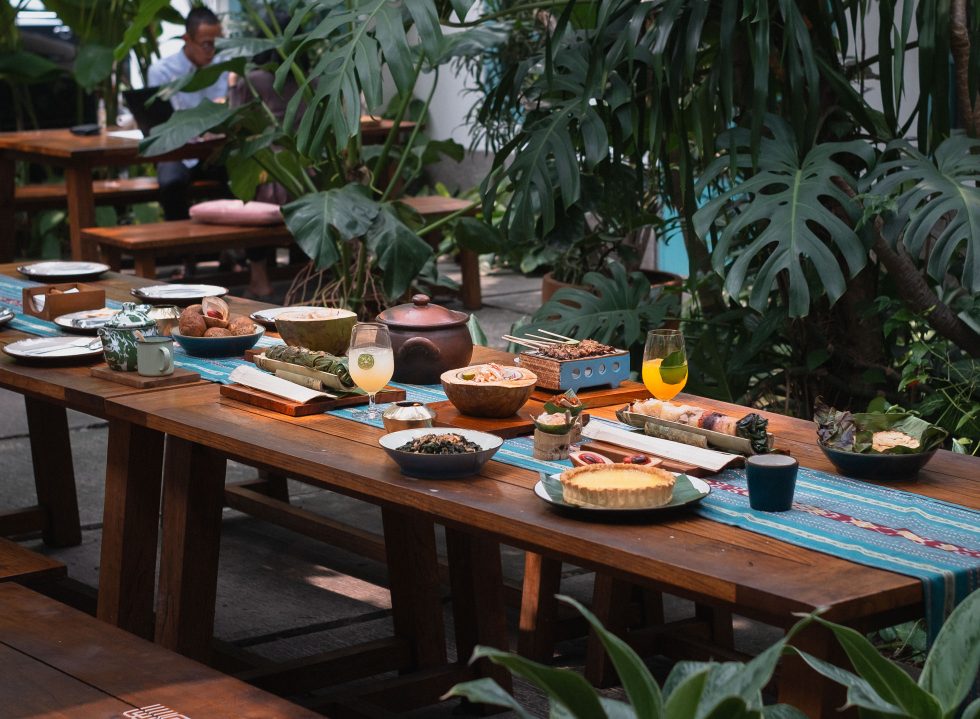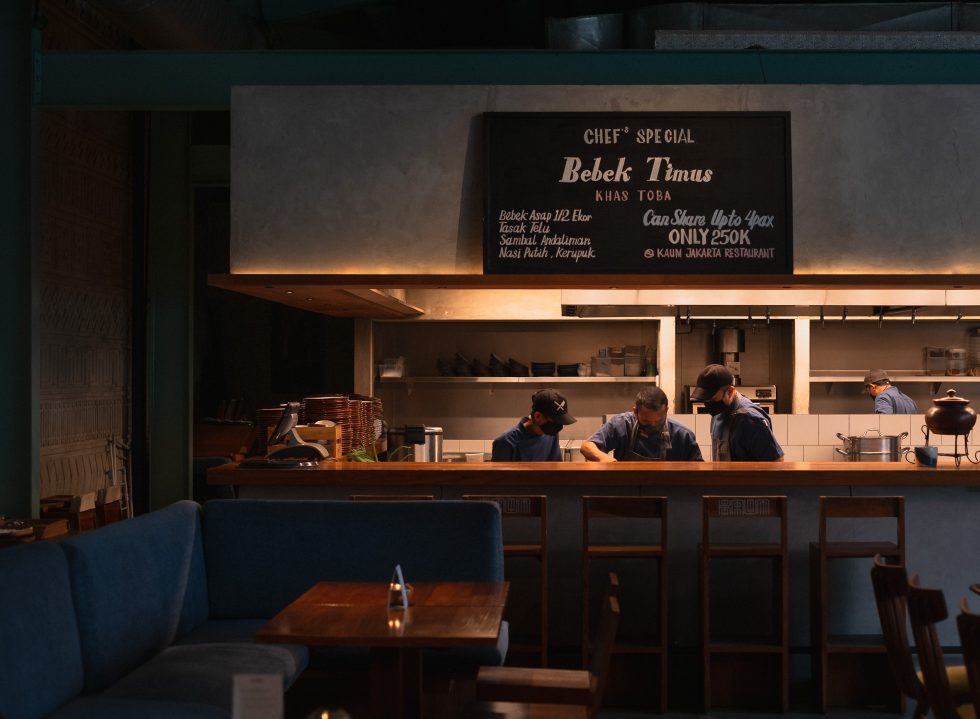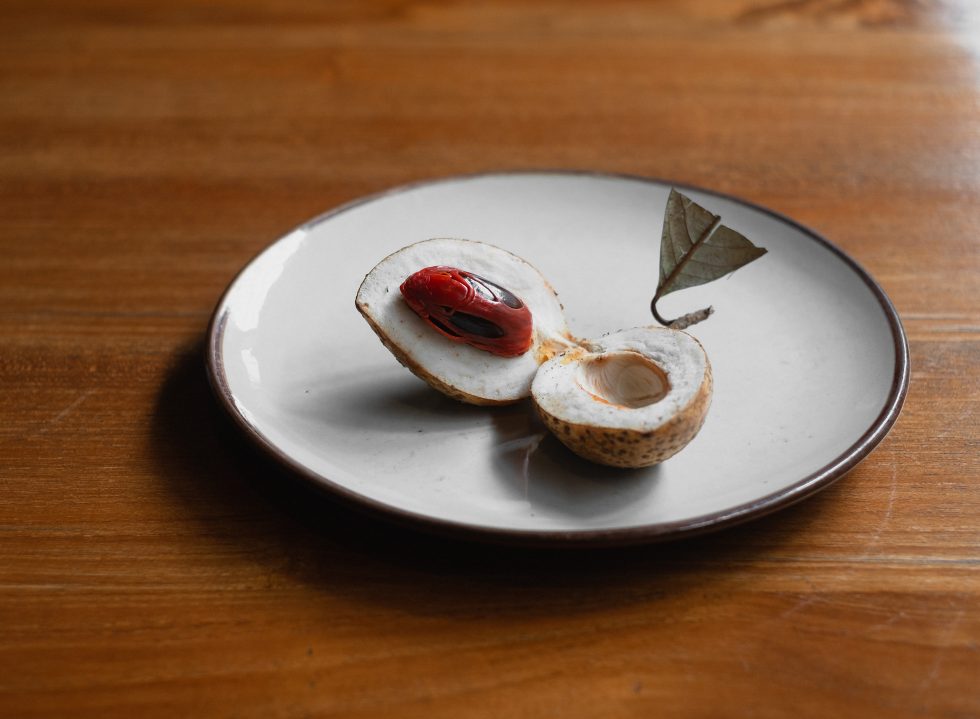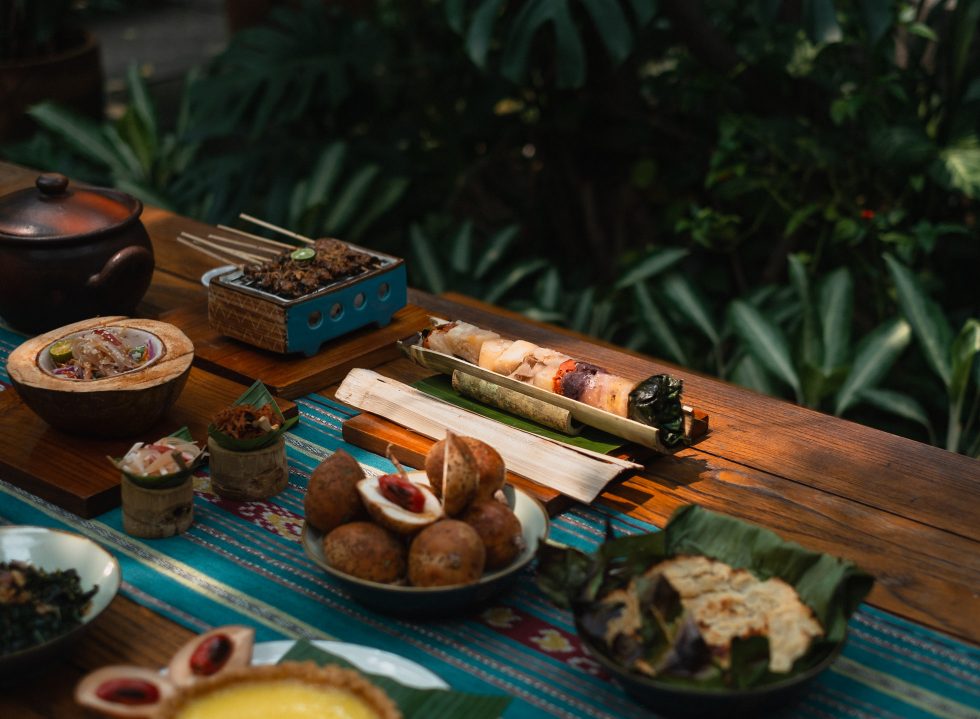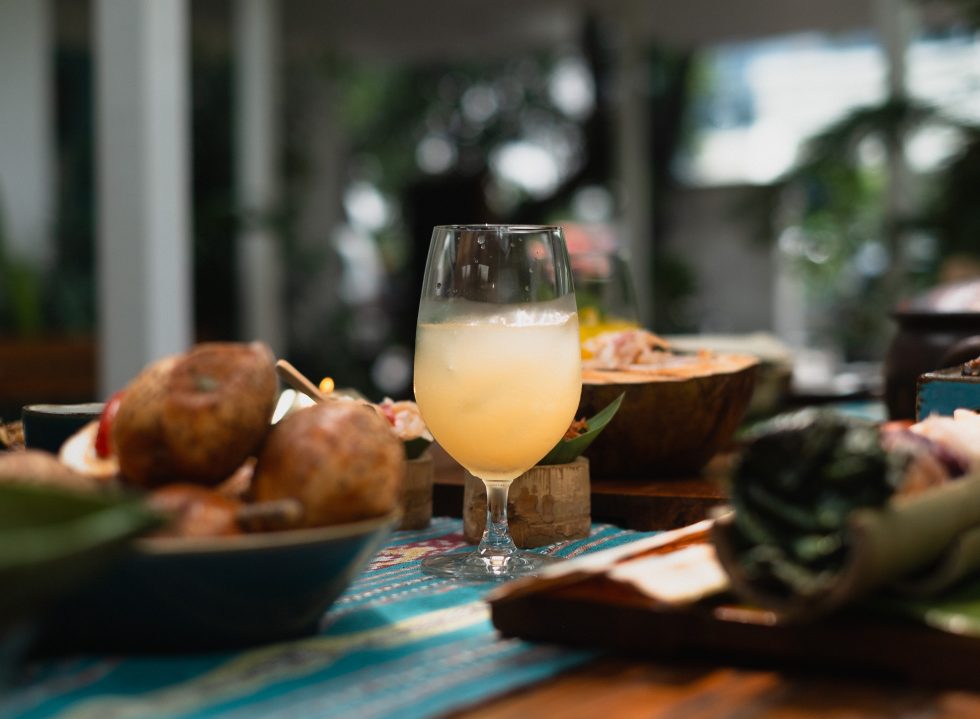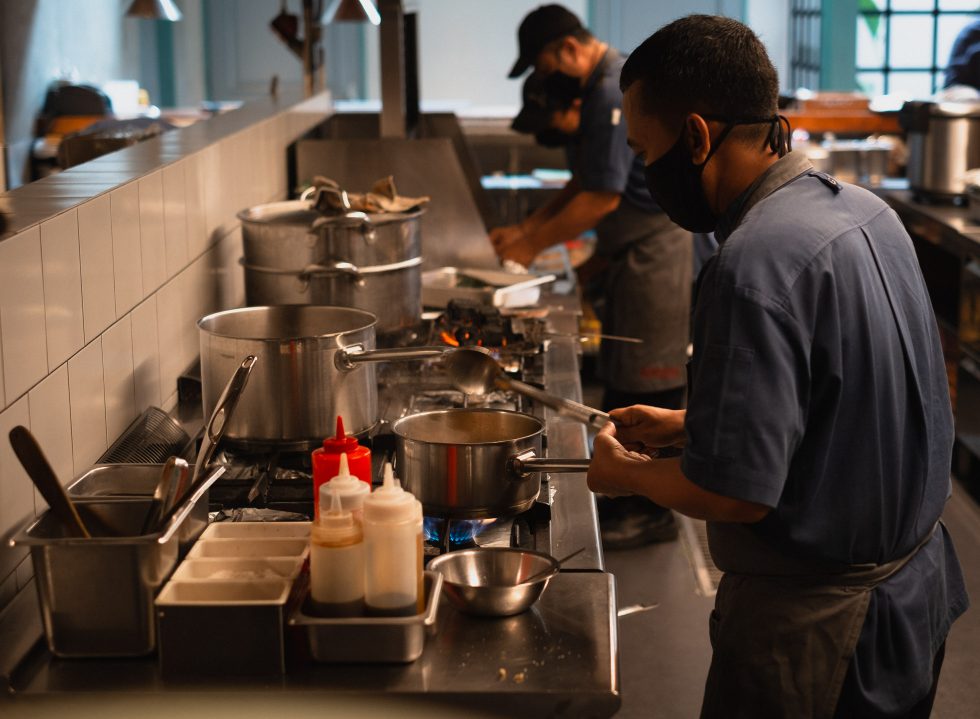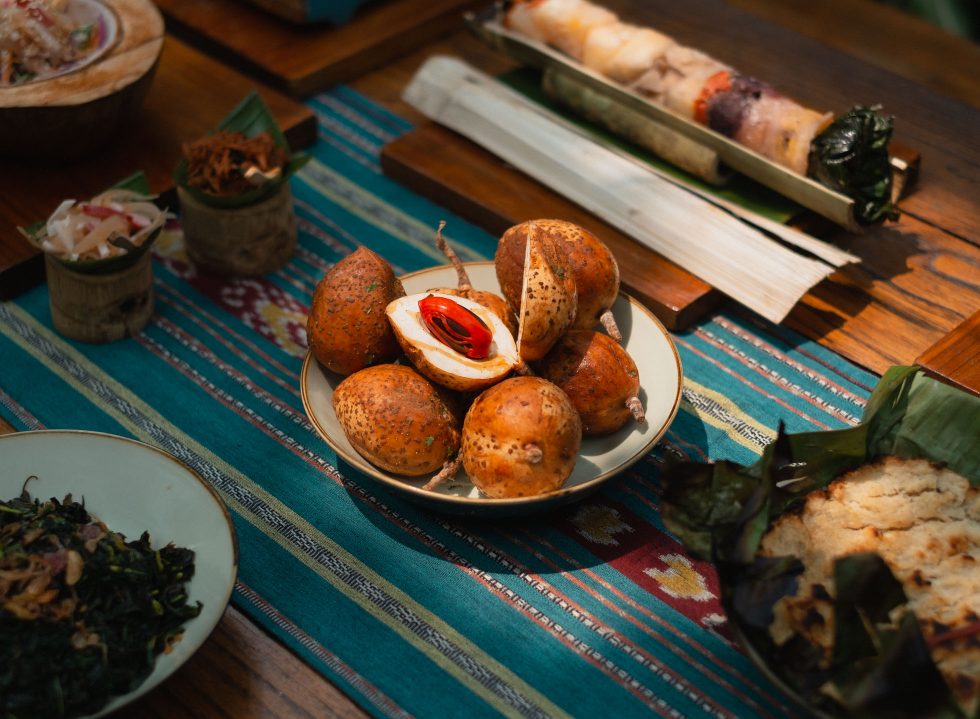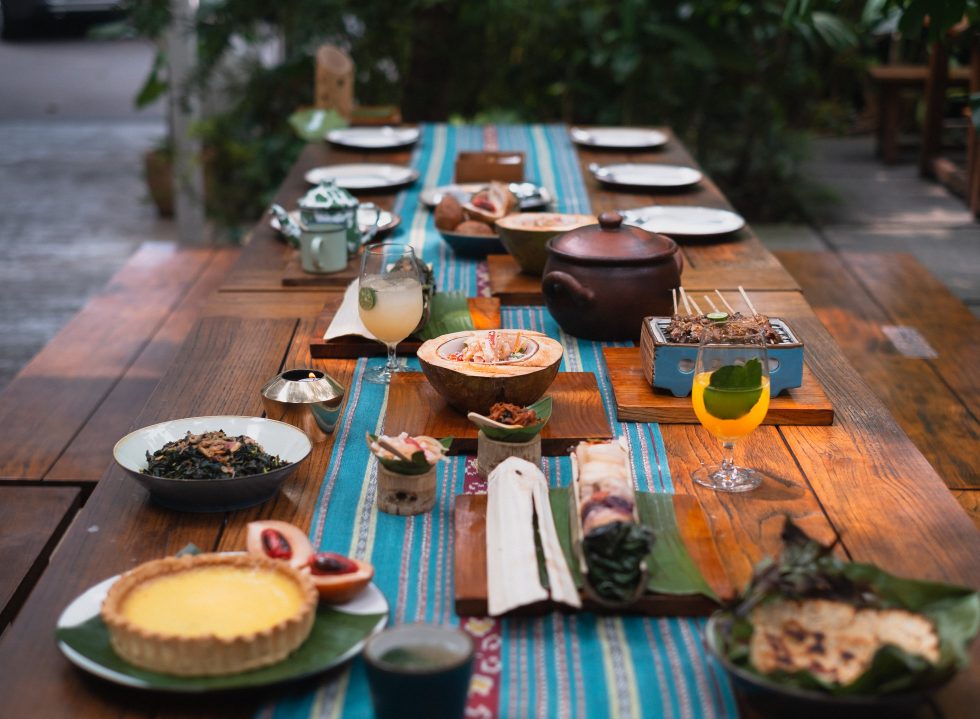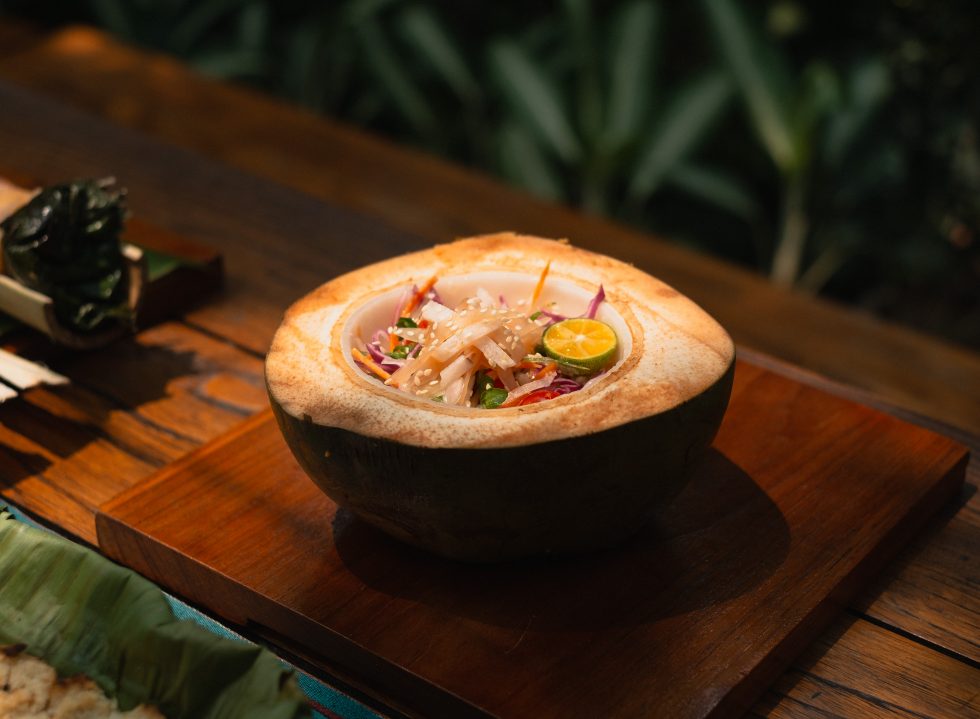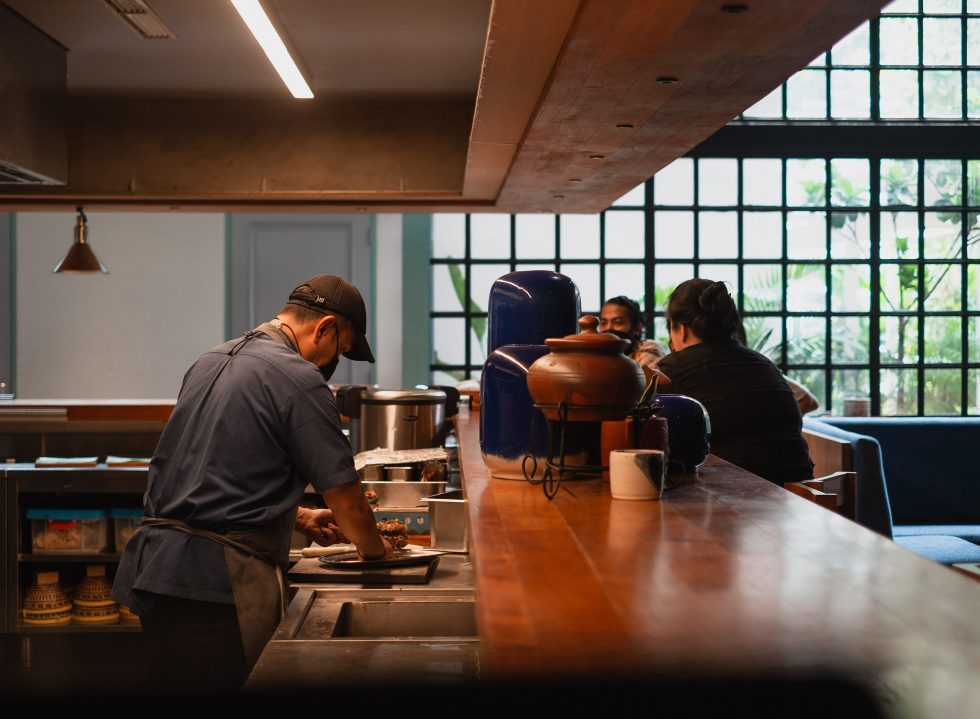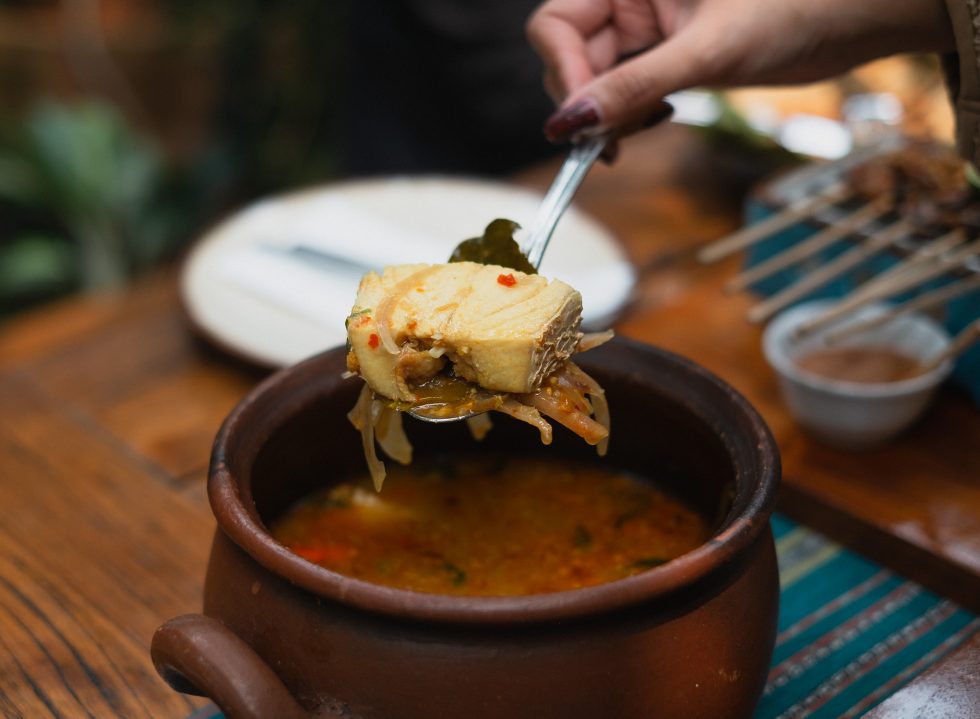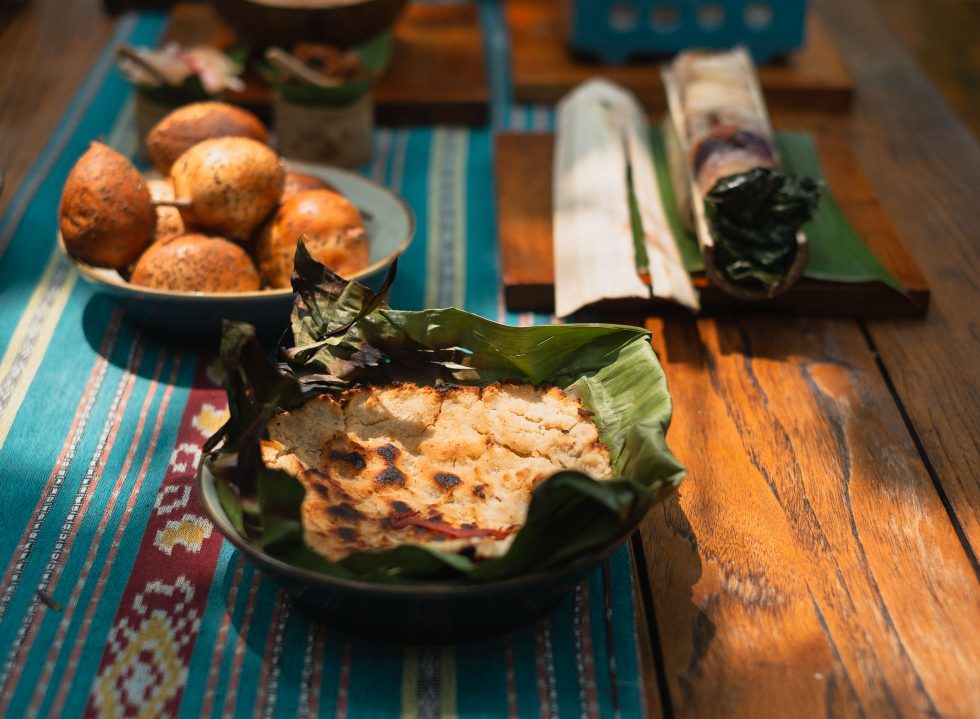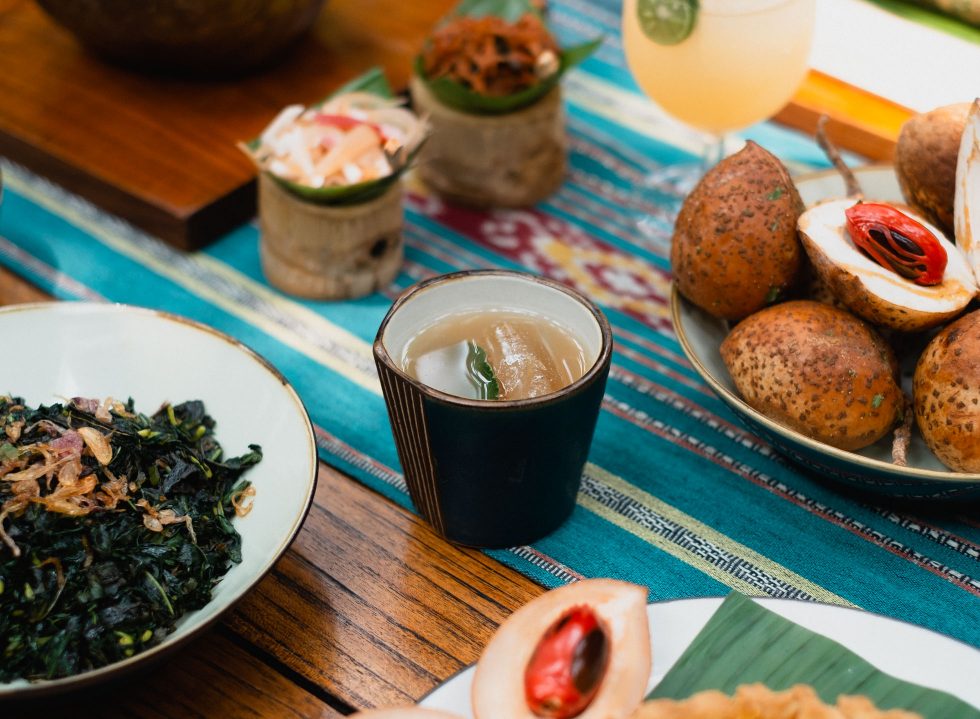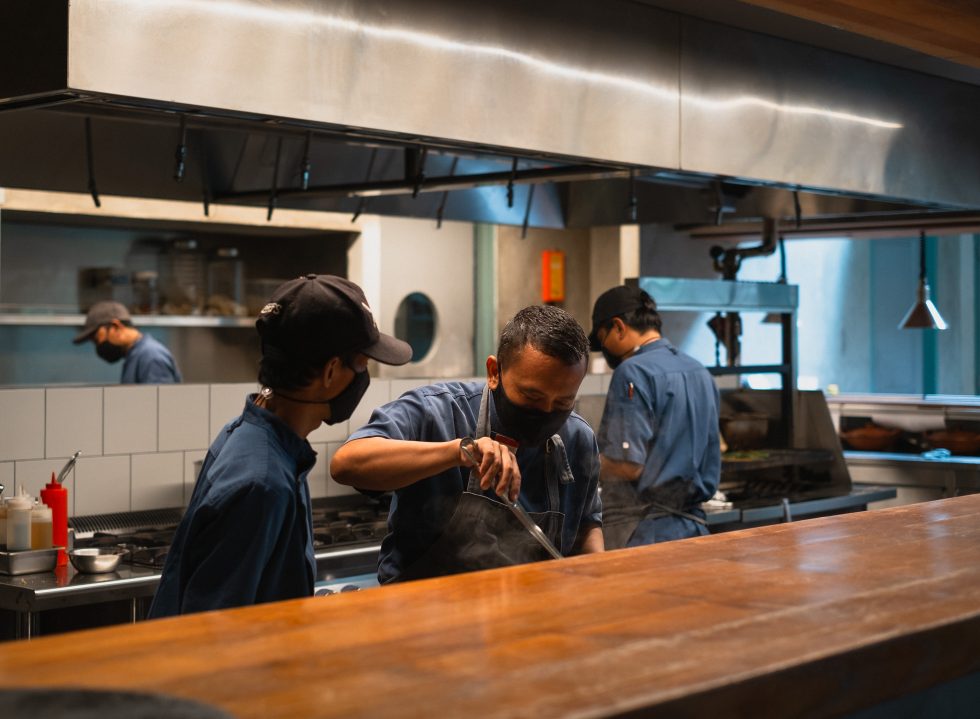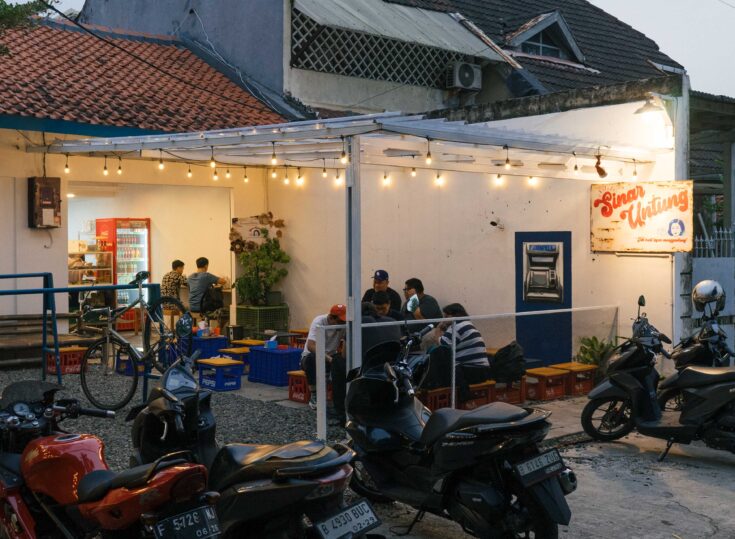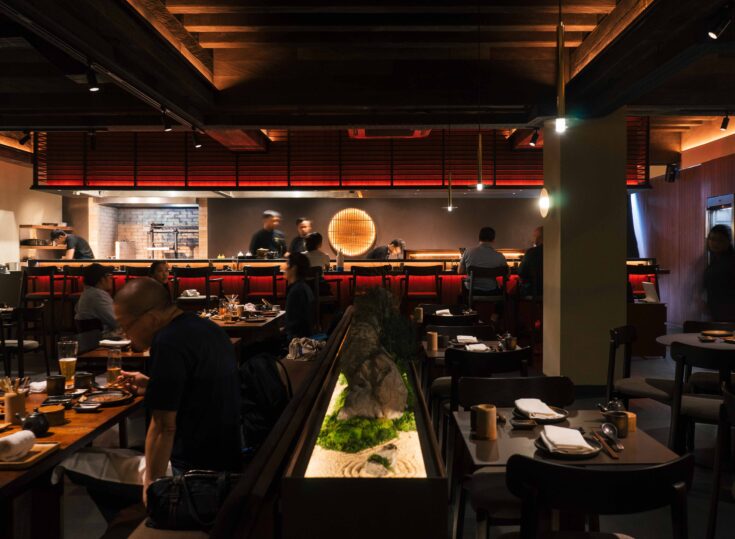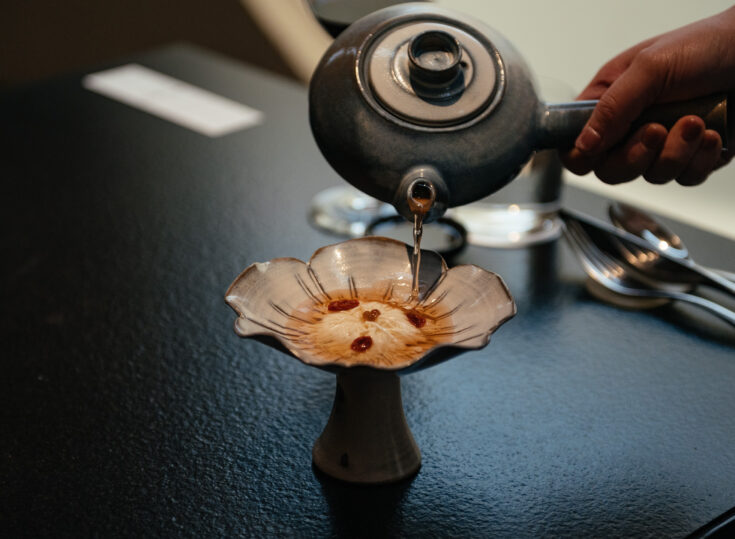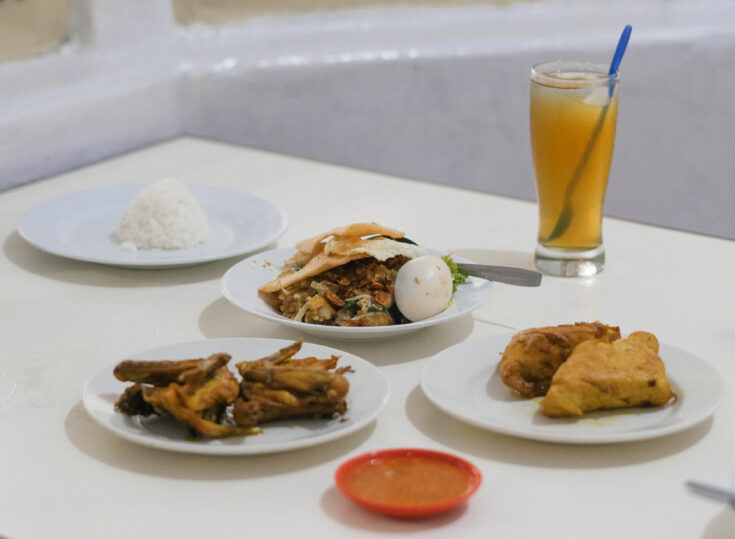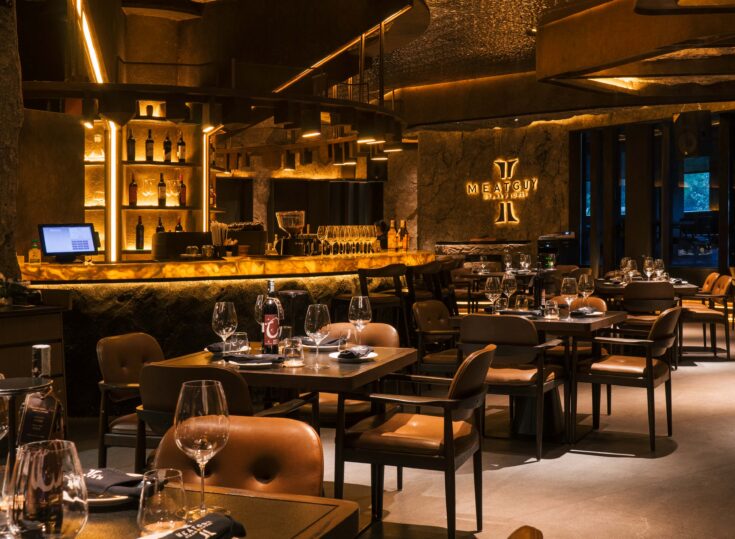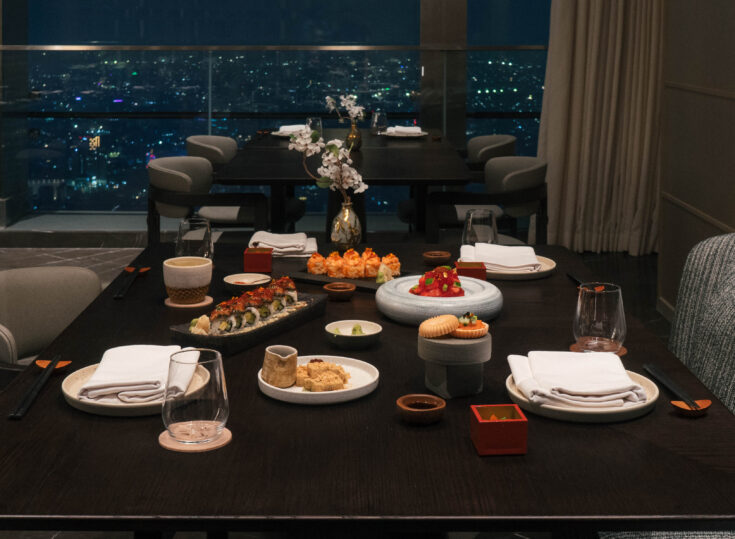In a country sheltering 17,500 islands that form the largest archipelago in the world, it’s no surprise that we continue to discover colourful culinary cultures that are local, yet foreign to most. Among the least explored, we zoom in our lens to West Papuan cuisine and its zesty gem, pala Papua or pala Fakfak, a nutmeg aptly named after the coastal regency it is native to. Beyond an important commodity within the chain of supply-and-demand, the value of this little-known treasure rests on its unifying power as a heritage, as well as its influence on West Papuan cuisine.
In a journey to discover the indigenous plant, Potato Head Family’s KAUM Jakarta teamed up with a Bali-based non-profit research institute Yayasan Inobu for their latest “Jelajah Nusantara” expedition with hopes of bringing a richer discourse on pala Fakfak—the island’s main commodity and source of income. Through culinary exploration and sustainable socio-cultural preservation, the collaboration aims to shed light on the plant and emphasize its position in the national market, as the plant remains anonymous to many Indonesians despite its traction in international trade.
The collaborative journey unravelled an ironic truth: even with Indonesia reigning first place as the world’s main producer and exporter of nutmeg (with Vietnam, the United States, Netherlands, Germany, and Italy being the main importers), historical records of spice routes recorded little to no trajectory of this native spice, while the domestic awareness of its quality remains sparse in comparison to other nutmegs found in other corners of the archipelago, namely pala Banda from Banda Neira.
Accordingly, the lack of discourse and government initiative regarding pala Fakfak translate to systemic challenges for the local farmers. “Before Yayasan Inobu rose to the challenge of sustaining the welfare of Fakfak farmers, they struggled with price fluctuations in the trading ecosystem. Today, the monetary value of the nutmeg has been stabilised by established grades or quality,” explained Head Chef of KAUM Jakarta Rachmat Hidayat, who home-stayed for a week in the Fakfak capital with colleague and Head Mixologist Pius Hadimore Ebang to unearth the forgotten gem of the Indonesian Far East.
In Fakfak, a jungle-ridden city bordering the sea, pala Papua takes up 58 per cent of West Papua’s nutmeg harvestry, a line of work kept alive by thousands of families from surrounding villages. The natives place great faith in the plant, which they named “Lady of the Forest”, and no villager speaks of it without expressing gratitude to the ancestors who have descended this heritage on their laps. The plant brings forth a strong sense of kinship which interweaves the diversity of this Muslim-dominated regency, and “satu tungku tiga batu” (three stones in one furnace) became their underlying philosophy that embraces the peaceful coexistence of Islamic, Catholic and Protestant faiths in Fakfak.
Beyond an important commodity within the chain of supply-and-demand, the value of this little-known treasure rests on its unifying power as a heritage, as well as its influence on West Papuan cuisine.
“Before harvesting the crops, women in the village will do a spiritual cleansing for good fortune, while the men have the task of climbing the trees to collect the fruits,” recalled Pius. Unlike other nutmegs found in Nusantara, pala Fakfak weighs a different appearance and flavour profile: its oval shape reaches twice as big as a typical nutmeg, with a harsh-textured rind. Its mace or fuli, the red membrane covering the seed, is the most important traded commodity of the fruit and mainly used for pharmaceutical purposes. While its seed, boasting a sweeter note and soothing aroma than average nutmegs, goes to the kitchen. “The locals rarely use the flesh, sometimes they would cook it as sambal or vegetable soup. The seed, however, is a spice prerequisite for every home cooking in Fakfak,” said Chef Rachmat.
A festive banquet ensues the harvest season, which takes place every once or twice a year, and an appreciation for togetherness is further reflected in the way the natives dine and commune. In an unmistakably traditional style, neighbours and family would dig up the meals straight from the same cooking pot, and dwelling in the coastal region means that seafood occupies centre stage in their everyday diet. Typically, the fresh and zesty hint of their fish-based dishes is combined with a fusion of raw herbs and spices. While lime, salt and lemongrass become the essential ingredients and antidote to the fishy odour. Cooking atop a smokey wood fire is a norm here: a traditional technique known for stimulating an even bolder flavour. From steaming a selection of starches (such as cassava, yams, purple potatoes, to name a few)—the carb alternatives to rice—to whipping up the main courses, everything goes on top of the wood fire.
The way the local communities present their dishes is also a part of what makes their culinary tradition unique: while the locals are famous for using talas (taro) leaf to wrap their meals, the usage of bamboo as a food container is also a custom that has been passed down for generations. The freshness and pungency of spices become a dominating flavour profile here in West Papua, all paraded in the popular main courses that they expertly dish up, such as Ikan Kuah Kuning or Ikan Bungkus, to pair with fresh leafy greens and carbs like sago or starch.
The plant brings forth a strong sense of kinship which interweaves the diversity of Fakfak.
In homage to the undiscovered treasure of pala Fakfak, Chef Rachmat and mixologist Pius crafted a line-up of dishes that showcase authentic West Papuan cuisine through the exploration of the nutmeg’s character, hailing the indigenous spice from the jungle straight to the table. “We use every part of pala Fakfak in our menu development so that nothing goes to waste,” mentioned the Chef.
For starters, there’s Meri Totora, a cold salad of pickled pala, vegetables and calamondin served in a coconut bowl. As for the mains, veggies and seafood boarded directly from the region become the spotlight, such as Sate Patimburak (grilled clam satay with peanut sauce and pickled pala fruit) or Tagas-Tagas, a plateful of sauteed greens with the likes of cassava leaves, papaya leaves, kangkung and kemangi. KAUM’s take on a beef-based dish coveted in the region, Daging Masak Wedi (grilled beef in a bamboo with kemangi, papaya leaves, cassava leaves and pala fruit) is also present here. Then, one can cap it on a sweet note with the dessert pie, Kue Lontar Buah Pala, a baked egg tart with pala fruit jam.
The line-up extended to beverages that are just as lively as the fares. To wit, take the Kopi Senang Fakfak, a caffeinated drink of Papua robusta with house-made Pala Fakfak molasses, or the refreshing mocktails like Hanggi Tomandin (homemade pala Fakfak syrup, kemangi, kaffir lime and coconut water) and Kuah Kuning Raduria (house-made pala Fakfak puree and Fakfak syrup with turmeric, kemangi leaf, lemongrass and chilli.)
KAUM’s journey to the Far East unearths not only the matter of indifference towards the indigenous plant of pala Fakfak, but also the influence that it breathes into the daily lives of the local communities that cultivate them: from being a legacy that bonds them together to galvanising their culinary traditions. There’s a wisdom to grasp from how they protect and celebrate this plant. “Back then, pala Fakfak had no name after it left the Papuan port,” recalled Chef Rachmat. Today, although still anonymous to many, it is slowly making its mark beyond the land in which it had grown, and KAUM’s “Jelajah Nusantara” can be a step forward in showcasing the region’s culinary heritage, further igniting the public attention to the many stories of Indonesian culinary wealth.
KAUM Restaurant’s Jelajah Nusantara Fakfak dining programme will be running until 31 May 2021. Find more information through KAUM Restaurant’s social media channels.
